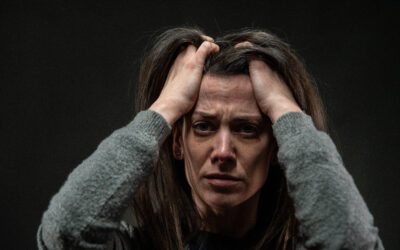Research suggests that the average adult has more than 6,000 thoughts per day. You have annoyed thoughts while in traffic and stressed thoughts when you’re approaching a work deadline. There is a type of mental health disorder that stems directly from your thoughts.
A thought disorder refers to an abnormal thinking process. There are subtypes and many different signs of a disorder that affects your thoughts. But they all disrupt the organization and processing of thoughts. This disordered thinking can be treated in a variety of ways, especially psychotherapy.
We’ll define what a thought disorder is and the most common types that you can develop. Then we’ll discuss how therapy can help.
What does it mean to have a thought disorder?
“Thought disorder” is a clinical term that refers to a disturbance in cognition or a disorganized way of thinking, impacting an individual’s ability to think and express themselves. Thought disorders are not formal diagnoses in the Diagnostic and Statistical Manual of Mental Disorders (DSM-5); instead, the DSM-5 describes and classifies specific mental disorders that may involve thought abnormalities.
Thought disorders are typically considered symptoms of other underlying mental health issues rather than stand-alone conditions. They are commonly (although not exclusively) associated with schizophrenia and other psychotic disorders.
Brain injuries, especially those impacting specific areas of the brain, can contribute to the development of certain mental health disorders that are associated with thought disorders.
Symptom subtypes and examples of thought disorders
Thought disorders can manifest in a variety of different thought and speech behaviors, and they often indicate an underlying mental health issue. They aren’t always easy to recognize or diagnose, as it’s normal to adapt some of these behaviors every now and then, especially when you’re tired or mentally exhausted.
In addition to positive or negative, thought disorder symptoms can be classified as cognitive symptoms (sometimes referred to as cognitive deficits). A positive thought disorder symptom means that there’s an added behavior, such as hallucinations. A negative thought disorder symptom means that there’s a lack of something, such as limited emotional response.
Here are a few of the most common signs, both external and internal:
- Circumstantiality — Also known as circumstantial thinking or speech, circumstantiality refers to taking a long time to get to the point of what you’re saying due to excessive details that are irrelevant.
- Clanging — If you’re clanging as you speak, it means that you’re choosing words based on the sound as opposed to the meaning. Clanging could mean that you use alliteration, rhymes or puns, which affects the logic and comprehensiveness of what you’re saying.
- Derailment — Also known as associative looseness, derailment looks like starting a sentence about a specific topic and then abruptly shifting to a different, unrelated topic.
- Distractibility — This describes being easily distracted while speaking, making it difficult to stay on topic.
- Illogicality — You’re engaging in illogical reasoning or drawing conclusions that don’t stem from logic, for example, making statements or arguments that lack logical coherence or fail to follow a rational thought process.
- Ruminating — You’re dwelling on distressing thoughts, playing them over and over in your mind without resolution or progress.
- Cognitive distortion — You’re inaccurately perceiving reality due to irrational thought patterns leading to negative emotions. Your brain is creating filters for a situation that paints it in a negative light, such as catastrophizing.
Address the root cause of your thought disorder
Family and social support play a crucial role in ensuring that loved ones with thought disorders receive the help they need. People with TD may not recognize their own challenges. If you’re showing signs of a disorder that affects your thoughts, it’s important to speak to a mental health care professional, such as a licensed therapist.
Psychotherapy can help you adjust your cognitive patterns. It can help you gain skills that you need to alleviate the disorder symptoms in the future, including:
- Cognitive thinking skills
- Communication skills
- Problem-solving skills
A therapist may also recommend that you see a psychiatrist or your physician for medication if they believe that your disorder is connected to schizophrenia or mania.
How Lightfully Behavioral Health can help address your thought disorder
Thought disorders are important to address because they often indicate the presence of a treatable mental health condition. Treatment targets the underlying medical condition and often involves a combination of psychotherapy, group and family therapy, and medication. Treatment may also provide relational skills support and guidance with stress management techniques and keeping a structured routine.
At Lightfully, we can help you work through your symptoms and provide you with treatment using process-based therapy in programs like the Intensive Outpatient Program.
The framework of our clinic consists of evidence-based, clearly defined, data-driven and whole-person-centered care. Change is possible. When you’re ready to take the first step, reach out to our Admissions Concierge Team. We’ll take the next steps together, toward the fullest, brightest version of you.






